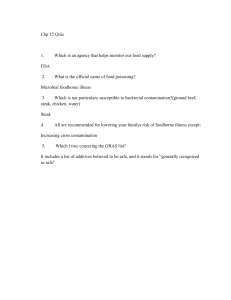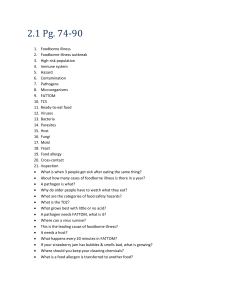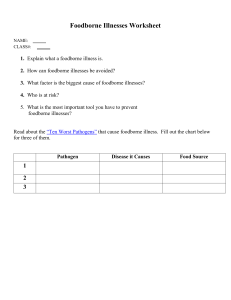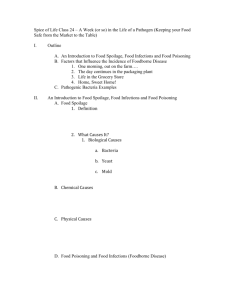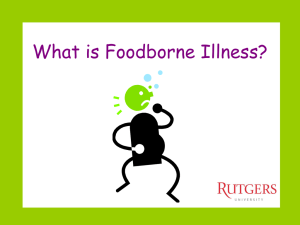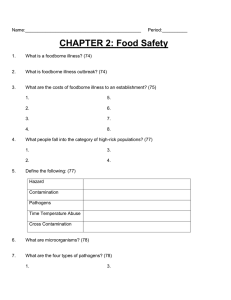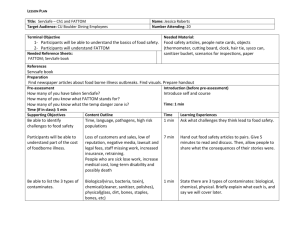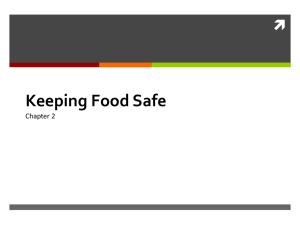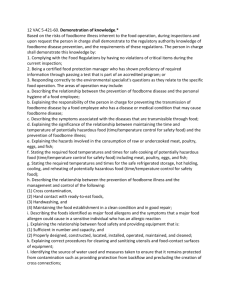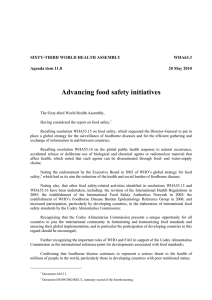MPH 520 Reducing Your Risk
advertisement
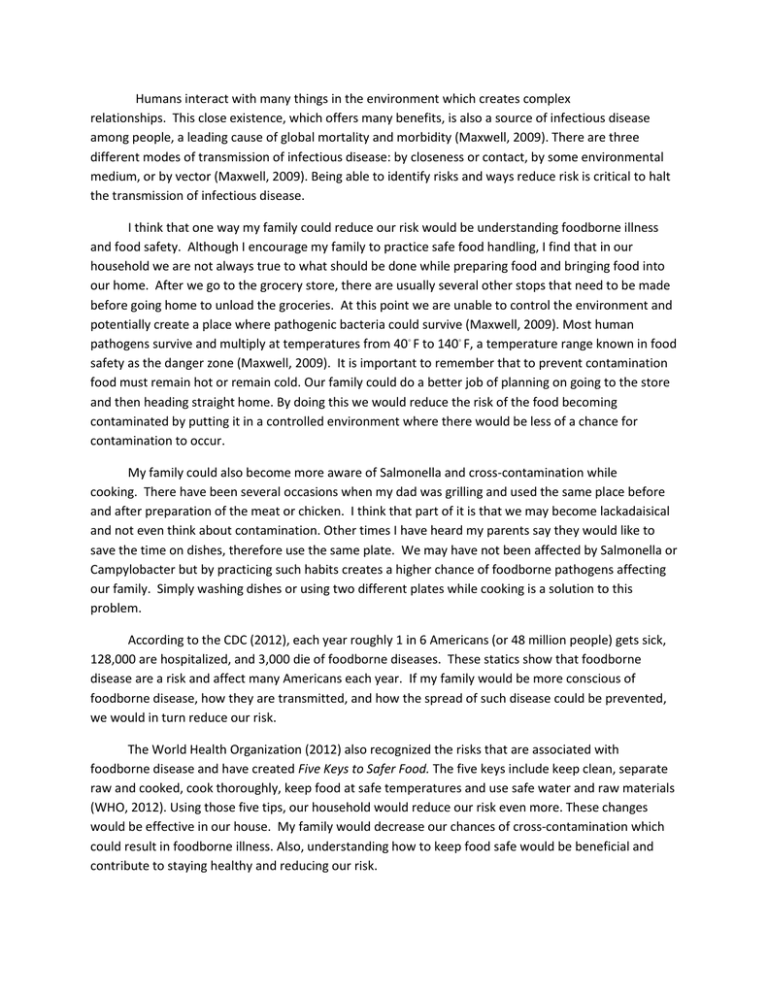
Humans interact with many things in the environment which creates complex relationships. This close existence, which offers many benefits, is also a source of infectious disease among people, a leading cause of global mortality and morbidity (Maxwell, 2009). There are three different modes of transmission of infectious disease: by closeness or contact, by some environmental medium, or by vector (Maxwell, 2009). Being able to identify risks and ways reduce risk is critical to halt the transmission of infectious disease. I think that one way my family could reduce our risk would be understanding foodborne illness and food safety. Although I encourage my family to practice safe food handling, I find that in our household we are not always true to what should be done while preparing food and bringing food into our home. After we go to the grocery store, there are usually several other stops that need to be made before going home to unload the groceries. At this point we are unable to control the environment and potentially create a place where pathogenic bacteria could survive (Maxwell, 2009). Most human pathogens survive and multiply at temperatures from 40◦ F to 140◦ F, a temperature range known in food safety as the danger zone (Maxwell, 2009). It is important to remember that to prevent contamination food must remain hot or remain cold. Our family could do a better job of planning on going to the store and then heading straight home. By doing this we would reduce the risk of the food becoming contaminated by putting it in a controlled environment where there would be less of a chance for contamination to occur. My family could also become more aware of Salmonella and cross-contamination while cooking. There have been several occasions when my dad was grilling and used the same place before and after preparation of the meat or chicken. I think that part of it is that we may become lackadaisical and not even think about contamination. Other times I have heard my parents say they would like to save the time on dishes, therefore use the same plate. We may have not been affected by Salmonella or Campylobacter but by practicing such habits creates a higher chance of foodborne pathogens affecting our family. Simply washing dishes or using two different plates while cooking is a solution to this problem. According to the CDC (2012), each year roughly 1 in 6 Americans (or 48 million people) gets sick, 128,000 are hospitalized, and 3,000 die of foodborne diseases. These statics show that foodborne disease are a risk and affect many Americans each year. If my family would be more conscious of foodborne disease, how they are transmitted, and how the spread of such disease could be prevented, we would in turn reduce our risk. The World Health Organization (2012) also recognized the risks that are associated with foodborne disease and have created Five Keys to Safer Food. The five keys include keep clean, separate raw and cooked, cook thoroughly, keep food at safe temperatures and use safe water and raw materials (WHO, 2012). Using those five tips, our household would reduce our risk even more. These changes would be effective in our house. My family would decrease our chances of cross-contamination which could result in foodborne illness. Also, understanding how to keep food safe would be beneficial and contribute to staying healthy and reducing our risk. References Center for Disease Control and Prevention. (2012). CDC. In Estimates of Foodborne Illness in the United States. Retrieved November 14, 2012, from http://www.cdc.gov/foodborneburden/. Maxwell, Nancy Irwin. (2009). Understanding Environmental Health, How We Live in the World. Jones and Bartlett. World Health Organization. (2012). WHO. In Prevention of foodborne diseases: Five keys to safer food. Retrieved November 14, 2012, from http://www.who.int/foodsafety/consumer/5keys/en/.
